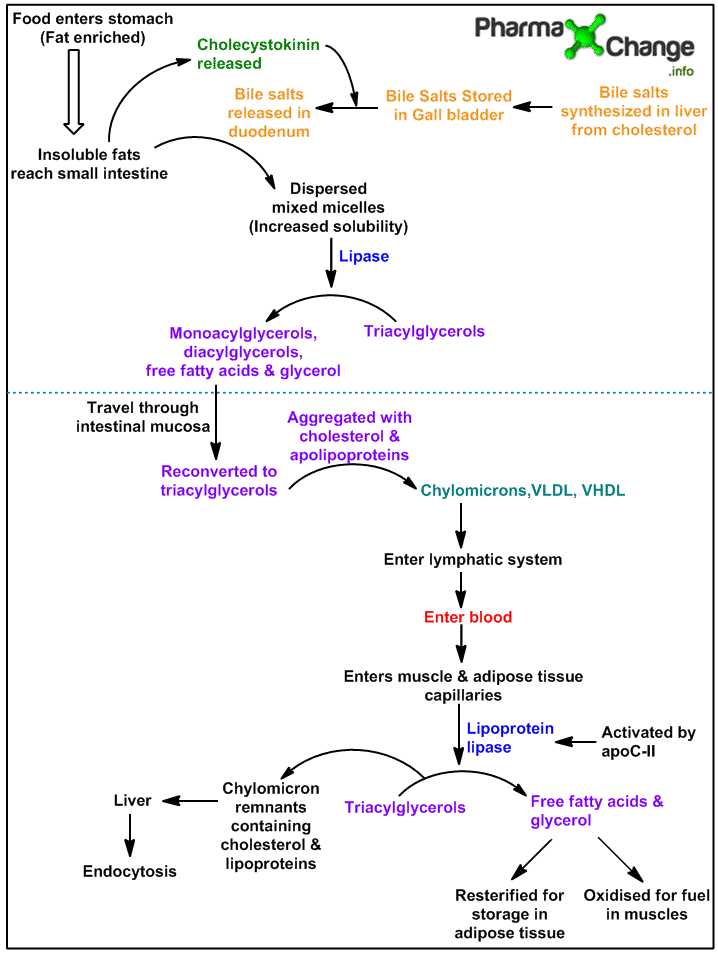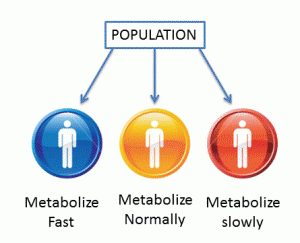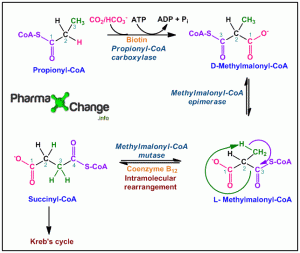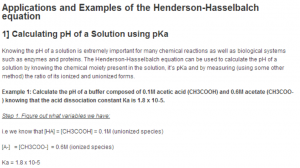Introduction:
Triacylglycerols (also called neutral fat or depot fat) comprise 85-90% of body lipids. These triacylglycerols are stored in the adipose tissue as lipid droplets and serve as energy reserve for the body. The energy produced from these reduced hydrocarbons (fats) is twice the energy produced from the same weight of carbohydrates or proteins.
Moreover, lipids possess the property of being insoluble in water (hydrophobic) and are chemically inert thus possessing no risk of interaction with other cellular matter. Thus their passive nature causes no harm to the cells and therefore are good storage compounds for energy. These stored fats can serve as good source of energy during longs periods of starvation. An excellent example of utilization of this stored fat is seen in bears during hibernation and migrating birds.
Fats are mainly digested within the small intestine of the gastrointestinal tract (GIT). For utilization of fat, as it is hydrophobic in nature, has to first emulsified so that they are easily digested by the water soluble enzymes in the intestine. And for mobilization of these fats in the blood they must be bound to proteins (such as albumin) to counteract their insolubility.
Digestion of Triacylglycerols:
In the human body, there are three fat sources for obtaining energy:
- Fat obtained from the diet
- Fat stored in the adipose tissue
- Fat produced in liver from excess carbohydrates for transfer to other tissues
For the utilization of dietary fat,
- Before absorption through the intestine these hydrophobic (insoluble) fat particles have to be converted to microscopically small micelles to increase their solubility. This is achieved by products such as taurocholic acid which is a bile salt generally released in the small intestine after ingestion of food rich in fats by the activation of cholecystokinin (see image below). Bile salts are produced from cholesterol in the liver and are stored in the gall bladder.
- These finely dispersed micelles produced from the detergent action of bile salts now have increased solubilty. They are now hydrolysed by lipase to convert the triacylglycerols to monoacylglycerols, diacylglycerols, fatty acids and glycerol. All the end products formed here get diffused through the epithelial mucosa.

Summary of digestion of fats
- Once through the epithelial mucosa, they are converted back to triacylglycerols and aggregated with cholesterol and apolipoproteins to form chylomicrons.
- Apolipoproteins are proteins which bind lipids and carry out transportation of lipids like triacylglycerols, cholesterol, cholesteryl esters and phospholipids. Depending on the the combination of the lipid and protein, various kind of substances varying in densities are produced. The range can vary from very low density lipoproteins (VLDL) to very high density lipoproteins (VHDL).
- Cell surfaces have specific receptors for their lipoproteins. Thus for passage from the intestinal mucosa to the lymphatic system the chylomicrons containing apolipoprotein C-II are taken up by attachment to the receptors.
- These chylomicrons then reach either to the adipose tissue or the muscle via blood depending upon their requirement.
- In the capillaries of the adipose tissue and muscles, apolipoprotein C-II activates the enzyme lipoprotein lipase which breaks down the chylomicrons and hydrolyses the triacylglycerols to fatty acids and glycerol.
- These end products are utilised by the muscles for energy, whereas in the adipose tissue they are reesterified to triacylglycerols for storage.
- The remaining fraction of chylomicrons which still has the cholesterol and apolipoproteins travel to the liver via blood and via the specific receptors are taken up by endocytosis.
- Some triacylglycerols which might have entered via the remnants of chylomicron in the liver are used up to synthesize other cellular components.
Thus when a fatty diet is ingested, a portion of it is utilized as much as required by the body to produce energy and the remaining fraction is stored in the adipose tissue as lipid droplets which when required are transported.For the stored lipids to get utilized, firstly mobilization of fats and cellular uptake of free fatty acids takes place followed by oxidation of the free fatty acids to produce energy.
Recommended Texts
- David L. Nelson and Michael M. Cox, Lehninger Principles of Biochemistry 6th Edition
- Jeremy M. Berg, John L. Tymockzo and Luber Stryer, Biochemistry 7th Edition
- Reginald H. Garrett, Charles M. Grisham, Biochemistry by Reginald H Garrett 5th Edition
.
- U. Satyanarayana, U. Chakrapani, Biochemistry by U. Satyanarayana. 3rd Edition.




Hurrah, that’s what I was searching for, what a data!
existing here at this webpage, thanks admin of this web page.
I really appreciate this post. I’ve been looking all over for this! Thank goodness I found it on Bing. You’ve made my day! Thanks again!